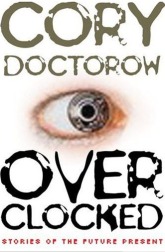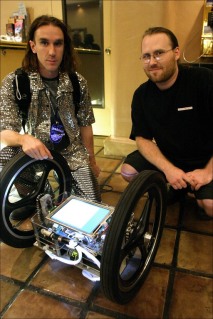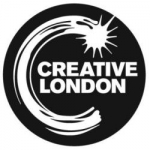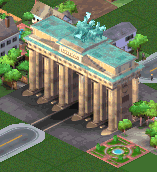Posts Tagged ‘Architecture’
Warming up for Picnic ’07
Picnic ’07, Amsterdam’s annual event organized by the Cross Media Week Foundation focusing on creativity in cross media content and technology, is only a month away and the list of speakers is nearly finished. Between the 25th and 29th of September, Amsterdam’s Westergastfabriek will once again host the event after the succes of last year’s edition. But with such a diverse and wide-ranging programme, where will you go? In order to get into the mood and warm up for the event, it is worthwhile to highlight some of the fascinating speakers and take a more in-depth look at what they are all about.
Reuben Steiger (Former Linden Labs Evangelist and founder/CEO Millions of Us)
 At Picnic ’06 Philip Rosedale of Linden Labs / Second Life presented his take on ‘the empowerment offered by Second Life of the average citizen to not only create but monetize their own content and design’. This year former Linden Labs Evangelist Reuben Steiger will take the stage at Picnic’s Virtual Worlds, which is all about virtual worlds becoming central to the future of marketing, technology, entertainment and brand-building. After his work at Linden Labs, Steiger founded and became CEO of Millions of Us, a company dedicated to helping businesses understand and harness the power of virtual worlds. An example is the Toyota Scion car in Second Life.
At Picnic ’06 Philip Rosedale of Linden Labs / Second Life presented his take on ‘the empowerment offered by Second Life of the average citizen to not only create but monetize their own content and design’. This year former Linden Labs Evangelist Reuben Steiger will take the stage at Picnic’s Virtual Worlds, which is all about virtual worlds becoming central to the future of marketing, technology, entertainment and brand-building. After his work at Linden Labs, Steiger founded and became CEO of Millions of Us, a company dedicated to helping businesses understand and harness the power of virtual worlds. An example is the Toyota Scion car in Second Life.
Being an evangelist and clearly someone who believes in the power of virtual worlds, Steiger fights of recent criticism of Second Life as a branding tool at influxinsights.com by saying that ‘some of the criticism is partially warranted, but a lot of it is poorly contextualized and opportunistic, in the sense that pundits love to tear down technologies that have ridden a wave of hype. IT analyst firm Gartner calls this the hype cycle – new technologies spark a wave of initial excitement, expectations inflate, the technology is found to be imperfect in some ways, and there is a backlash – but in the long term, a good technology will overcome the hype cycle and enjoy long-term adoption.’ Are virtual worlds all that Steiger says they are, or just a big bubble? Are you a skeptic or an enthusiast? Not sure? You can find out at Virtual Worlds. In the video below Steiger answers questions on his personal interest in Second Life and if virtual worlds are a response to alienation in real-life.
When? 27th September 14.00 – 17.00
Where? WesterUnie
What? Virtual Worlds at Picnic ’07
Cory Doctorow (SF novelist, blogger, technology activist)
 Cory Doctorow, co-editor of popular weblog BoingBoing and contributor to the likes of New York Times and Wired, explores the benefits and consequences of online systems in his latest (fictional) book Overclocked: Stories of the Future Present (free download). This provocative collection of six previously released stories shows Doctorow extrapolating todays user experiences towards a futuristic vision and creating fascinating stories in doing so. An extensive review can be found at The Uberreview. For his writings, Doctorow has already been compaired to ‘Cyberspace’ godfather William Gibson by Entertainment Weekly. In the Authors@Google series Cory Doctorow himself presents and discusses the book, if any questions remain be sure to go see Doctorow at Fab, or the personal fabrication revolution.
Cory Doctorow, co-editor of popular weblog BoingBoing and contributor to the likes of New York Times and Wired, explores the benefits and consequences of online systems in his latest (fictional) book Overclocked: Stories of the Future Present (free download). This provocative collection of six previously released stories shows Doctorow extrapolating todays user experiences towards a futuristic vision and creating fascinating stories in doing so. An extensive review can be found at The Uberreview. For his writings, Doctorow has already been compaired to ‘Cyberspace’ godfather William Gibson by Entertainment Weekly. In the Authors@Google series Cory Doctorow himself presents and discusses the book, if any questions remain be sure to go see Doctorow at Fab, or the personal fabrication revolution.
When? 28th September
Where? WesterLiefde
What? FAB, or the personal fabrication revolution
Pablos/Paul Holman (Futurist, IT security expert, notorious hacker)
From an interview with Pablos “Paul” Holman at DLD ’07, shown in video below, comes the following provocative quote on creativity in companies: ‘Especially large companies tend to be poor at doing new things. They have lots of resources, lots of people and a lot of infrastructure . But all that gets in the way of when you’re trying to be creative. […] Ideally for me, I’d be able to wake up in the morning and dream up something I’ve been dreaming about. Then go build it by lunchtime, launch it in the afternoon and see if people like it. And then maybe fix some bugs by dinner.’
 Contrary to Doctorow, Holman does not read science fiction because he doesn’t want to be accused of plagiarism. His views however are, as the Picnic website also mentions, unique. With his design studio Komposite he ‘consults on bizarre invention and design projects that assimilate new technologies’. To give you an idea: Among his projects is the Hackerbot, a WiFi seeking robot that can find you when you’re using a wireless network – and drive up to show you your password on its screen. According to the Hackerbot website, the robot is really quite friendly and tries not to show your passwords to anyone else. Interested? Be sure to check out Holman at Picnic ’07, also if you’re interested in salsa dancing!
Contrary to Doctorow, Holman does not read science fiction because he doesn’t want to be accused of plagiarism. His views however are, as the Picnic website also mentions, unique. With his design studio Komposite he ‘consults on bizarre invention and design projects that assimilate new technologies’. To give you an idea: Among his projects is the Hackerbot, a WiFi seeking robot that can find you when you’re using a wireless network – and drive up to show you your password on its screen. According to the Hackerbot website, the robot is really quite friendly and tries not to show your passwords to anyone else. Interested? Be sure to check out Holman at Picnic ’07, also if you’re interested in salsa dancing!
When? TBA
Where? TBA
What? Pablos Holman
Stefan Sagmeister (Graphic designer and typographer)
 You might have seen Stefan Sagmeister‘s design in your local record shop on the covers of Rolling Stones, Lou Reed and Talking Heads recordings. The Picnic website mentions that just as film, art, music and literature have the power to move people, Stefan Sagmeister’s innovative work shows that graphic design, too, can cut to the emotional core. An in-depth interview with Sagmeister can found at designboom.com. The image is courtesy of Grafik-freunde Stuttgart.
You might have seen Stefan Sagmeister‘s design in your local record shop on the covers of Rolling Stones, Lou Reed and Talking Heads recordings. The Picnic website mentions that just as film, art, music and literature have the power to move people, Stefan Sagmeister’s innovative work shows that graphic design, too, can cut to the emotional core. An in-depth interview with Sagmeister can found at designboom.com. The image is courtesy of Grafik-freunde Stuttgart.
In 2004 Sagmeister spoke in Monterey, California about how design can make us happy and more specifically design that made him happy on a personal level. Telling stories ranging from billboards and museum exhibitions to pictorial language, Sagmeister is able to show how design can touch a nerve. Design never felt more personal while listening to Sagmeister’s presentation and his words seem far removed from corporate thought. Anyone intested in the emotional side of creativity, and creative industries in general, should see Sagmeister at Creative Genius: Things I Have Learned So Far at Picnic ’07.
When? 27th September 16.50 – 17.20
Where? Zuivering West
What? Creative Genius: Things I Have Learned So Far – Stefan Sagmeister
Various Meetings and (Un)Common Ground
Like last year, Picnic also hosts various meetings such as Virtueel Platform’s (Un)common Ground II: An expert meeting that brings together all the top thinkers in the industry. This year the sub-title is Scale and Intimacy. At the meeting experts will take a close look at the complex issues arising when practices and models of collaboration move across different scales. Like Stefan Sagmeister in his presentation, questions such as ‘how to maintain the emotional connection that people make to the ideas that are promoted or the services or products that it delivered’, are asked. Although the meeting is ‘invitation only’, be sure to check out Virtueel Platform’s publication (Un)common ground. Creative encounters across sectors and disciplines for more information.
For information on all Picnic ’07 events (25th – 29th of September) go to the Picnic network website. Oh… and did I mention Andrew Keen (see my previous post) will also be there?
Dispatches from the City: Examples from MyCreativity
 Together with the Masters of Media crew, I have been covering the MyCreativity convention. An initiative by Geert Lovink and Ned Rossiter. I covered the last part of the convention and this featured some great examples of the upcoming Creative Industries around Europe.
Together with the Masters of Media crew, I have been covering the MyCreativity convention. An initiative by Geert Lovink and Ned Rossiter. I covered the last part of the convention and this featured some great examples of the upcoming Creative Industries around Europe.
The closing session of MyCreativity continued the previous session on dispatches from the city: Examples of the Creative Industry -or insert preffered term here- from around Europe. The first session covered Vienna, Dublin, Barcelona and Basel. In this second session we’re venturing into London, Helsinki, Berlin and with Rotterdam we’re bringing MyCreativity back home to the Netherlands. What follows are my observations, thoughts and questions on the presentations.
London by Anthony Davies
“The Evil Empire” of the Creative Industries as Davies introduced his country and city to the audience. He describes the process as being curiosity driven, or “knowledge for knowledge’s sake.” In his quite theoretical presentation Davies highlighted two examples from London; firstly the cooperation of the Institute of Contemporary Arts (ICA) and Cap Gemini, secondly an example from the University of Arts London (UAL). The first is illustrative for the second, so I will explain the first a bit more detailed below.
The ICA is a publicly funded instution and has since the late 90s been looking into cooperations with companies and a new way of financing culture. If we take a look at what both institutions are about, we can see where the two can meet, the ICA is an arts institute and the Cap Gemini the world’s leading management consulting and computer services firm. Business seemed to need creativity at the end of the twentieth century.
 This also resulted in certain ‘Clubs’ or networks, including for example Channel 4, Cap Gemini and the ICA. Network culture seems to have quite a lot of ties with the Creative Industries. Networking and cooperating seems to be on of the essences of the new industry, creating cultural entrepeneurs scouting the markets. And through these networks companies can also scout the best of breed and the ICA -for example- becomes a best of breed provider.
This also resulted in certain ‘Clubs’ or networks, including for example Channel 4, Cap Gemini and the ICA. Network culture seems to have quite a lot of ties with the Creative Industries. Networking and cooperating seems to be on of the essences of the new industry, creating cultural entrepeneurs scouting the markets. And through these networks companies can also scout the best of breed and the ICA -for example- becomes a best of breed provider.
This way there is a massive boost in educational funds and literally billions of euros are spent on these contracts. And in the end Cap Gemini of course also gets rewarded for their investment, by being leader of the creative pack in their field. In this light Davies mentioned the adaptibility of the discourse around the Creative Industry.
One thing that I got out of these two examples personally, is the fact that for example medical studies are heavily subsided by companies but that art and creative studies still mostly have to be untied and publicly funded only. Remains of a 70s hippie culture, or an essence of art?
Reading
Davies, Anthony. ‘The Surge to Merge Culture with the Economy.’ Presentation from Copenhagen Free University. 2001.
Davies, Anthony. ‘Basic Instinct: trauma and retrenchment 2000-4.‘
Davies, Anthony and Ford, Simon. ‘Culture Clubs.’
Davies, Anthony and Ford, Simon. ‘Art Capital.’
Helsinki by Minna Tarkka
Tarkka takes us on a “walk through Helsinki”, showing us mostly images of what changed the creativity of Helsinki in the recent history. Such as the impressive fire which destroyed the Makasiinit -or the VR Warehouses in English according to the Wikipedia entry– the center of Helsinki that marked the end of an era. To get an account of the event, follow this google search link: makasiinit fire.

This end of an era created the openess for new visions for the future of creativity in Helsinki. An interesting project Tarkka mentioned was Helsinki 2015. Tarkka questioned if in 2015 there would even be bigger enterprises? And she is anxious to see what will happen in the media landscape in the future of Finland, since it was very regulated and now there is new space opening up. An account of Finland looking to the future can be found at this short explanation of Finnsight 2015.
More and more Finland is looking for opportunities to brand itself on the international market. The Eurovision songfestival is seen as a great opportunity to present the new creative possibilities of Finland to Europe, although it is debatable if the previous Finnish winner Lordi is a good example for trustworthy business, but it sure was a creative act.
Reading
Tarkka, Minna. ‘Labours of location. Acting in the pervasive media space.’, Species of Spaces, ed. Giles Lane. Diffusion eBook Series. London: Proboscis. 2005.
Sivonen, Henri. ‘Makasiinit fire coverage‘
Berlin by Sebastian Luetgert
The critical theory comes back in the presentation from Luetgert called ‘Capital of Failures’; he wants to explain how creative initiatives did NOT work in Berlin. Armed with a whole range of great terms and thoughts he gives a very interesting presentation. What to think of ‘Easy-jettification’ for example, a term he used for the increasing cheap flights in Germany. But also an official slogan of the city of Berlin ‘Poor, but sexy.’ And what to think of ‘Islands of Excellence, Oceans of Dementia’ which refers to the deserting of the countryside in Germany.
 Lets take a look at the negative examples he gives of the city of Berlin. To begin with, the city of Berlin has an estimate debt of 60.000.000 euro’s, that is 20.000 per inhabitant. Luetgert compared this with playing Sim City with a constant debet (without the ability to cheat, I’d add). The destruction in the 1950s of the hardly damaged buildings from WWII is another negative, this was part of a plan to actually limit the amount of houses in Berlin to set up a better real estate market. Also the dot.com boom in Berlin started when it was already over in the world, so Berlin only experienced the downfall of it.
Lets take a look at the negative examples he gives of the city of Berlin. To begin with, the city of Berlin has an estimate debt of 60.000.000 euro’s, that is 20.000 per inhabitant. Luetgert compared this with playing Sim City with a constant debet (without the ability to cheat, I’d add). The destruction in the 1950s of the hardly damaged buildings from WWII is another negative, this was part of a plan to actually limit the amount of houses in Berlin to set up a better real estate market. Also the dot.com boom in Berlin started when it was already over in the world, so Berlin only experienced the downfall of it.
What is interesting is that Luetgert gives us a lot of things to think about, but not very concrete answers.
We have to fill in the dots ourselves on the question if being positively f*cked makes us creative. And if there is the capital of failures that actually helps us. Luetgert himself mentioned that the situation will be financially grimm for the next 20/30 years, but personally I really like Berlin for its broken, melancholic feel (amazingly portrayed in the film ‘Der Himmel Uber Berlin’). And the might just be the contradiction in ourselves Luetgert is talking about.
Reading
Luetgert, Sebastian. ‘An Introduction to a True History of the Internet.’
Luetgert, Sebastian. ‘Roaming Producers.’
Rotterdam by BAVO
This presentation started with its conclusion involving a Medea allegory; kill creativity to protect it (like Medea killed her children to protect them).
 One example from Rotterdam I’d like to highlight here a bit, is called the ‘Poetic Freedom Project’, more information in Dutch is available from SEV.nl: De Dichterlijke Vrijheid. In this project the buyers of the houses renovate the whole block themselves together with an architect subsidised by Rotterdam itself. What is interesting about this, is the flow of money around the various networks (buyers, Rotterdam, architects) to create a new creative enviroment to work in.
One example from Rotterdam I’d like to highlight here a bit, is called the ‘Poetic Freedom Project’, more information in Dutch is available from SEV.nl: De Dichterlijke Vrijheid. In this project the buyers of the houses renovate the whole block themselves together with an architect subsidised by Rotterdam itself. What is interesting about this, is the flow of money around the various networks (buyers, Rotterdam, architects) to create a new creative enviroment to work in.
More information about the work of BAVO architect-philosophers Gideon Boie and Matthias Pauwels can be found at www.bavo.biz. A site that is definitely worth checking out for its content.
Reading
BAVO. ‘Plea for an uncreative city (First draft of a yet to be finalized manuscript)‘. August 2006.
BAVO. ‘Enjoy the Right not to Enjoy!‘
Boie, Gideon. ‘Design Intelligence.’
 When the invitation for the Benelux Google Geoday 2007, shaped in the form of the Google Maps marker which has risen to fame in the past years, landed in my mailbox it promised to become an interesting day in Amsterdam’s
When the invitation for the Benelux Google Geoday 2007, shaped in the form of the Google Maps marker which has risen to fame in the past years, landed in my mailbox it promised to become an interesting day in Amsterdam’s  Seefeld takes the first example and also the mapping of New Holland, which was not accurate at first to say the least as the shape of the land on this image shows, to the present. He notices that the Google Geo team faces a similar situation in pasting together the best available satellite imagery to create the globe of Google Earth. Sometimes the information is available, sometimes not and in that case lesser detailed imagery has to be used. It is not about drawing dragons, but about improving satellite images.
Seefeld takes the first example and also the mapping of New Holland, which was not accurate at first to say the least as the shape of the land on this image shows, to the present. He notices that the Google Geo team faces a similar situation in pasting together the best available satellite imagery to create the globe of Google Earth. Sometimes the information is available, sometimes not and in that case lesser detailed imagery has to be used. It is not about drawing dragons, but about improving satellite images. Instead of discovering new land, like in the age of navigation and in the second example given above, the user is now able to discover new information, the era of the information age. The emphasis here was especially on the enhanced content applied to the base like web links, reviews of places, photographs and featured content. Seefeld actually went as far as too say that the base is nice and the content makes it great. The base is always the same, just like the physical. But it is information and meanings applied to the physical space that make it what it is. The new idea is that meaning is applied with the use of the virtual, leaving aside the physical. Through the geo applications new discoveries can be done in the physical space, as an example Seefeld showed the
Instead of discovering new land, like in the age of navigation and in the second example given above, the user is now able to discover new information, the era of the information age. The emphasis here was especially on the enhanced content applied to the base like web links, reviews of places, photographs and featured content. Seefeld actually went as far as too say that the base is nice and the content makes it great. The base is always the same, just like the physical. But it is information and meanings applied to the physical space that make it what it is. The new idea is that meaning is applied with the use of the virtual, leaving aside the physical. Through the geo applications new discoveries can be done in the physical space, as an example Seefeld showed the 


